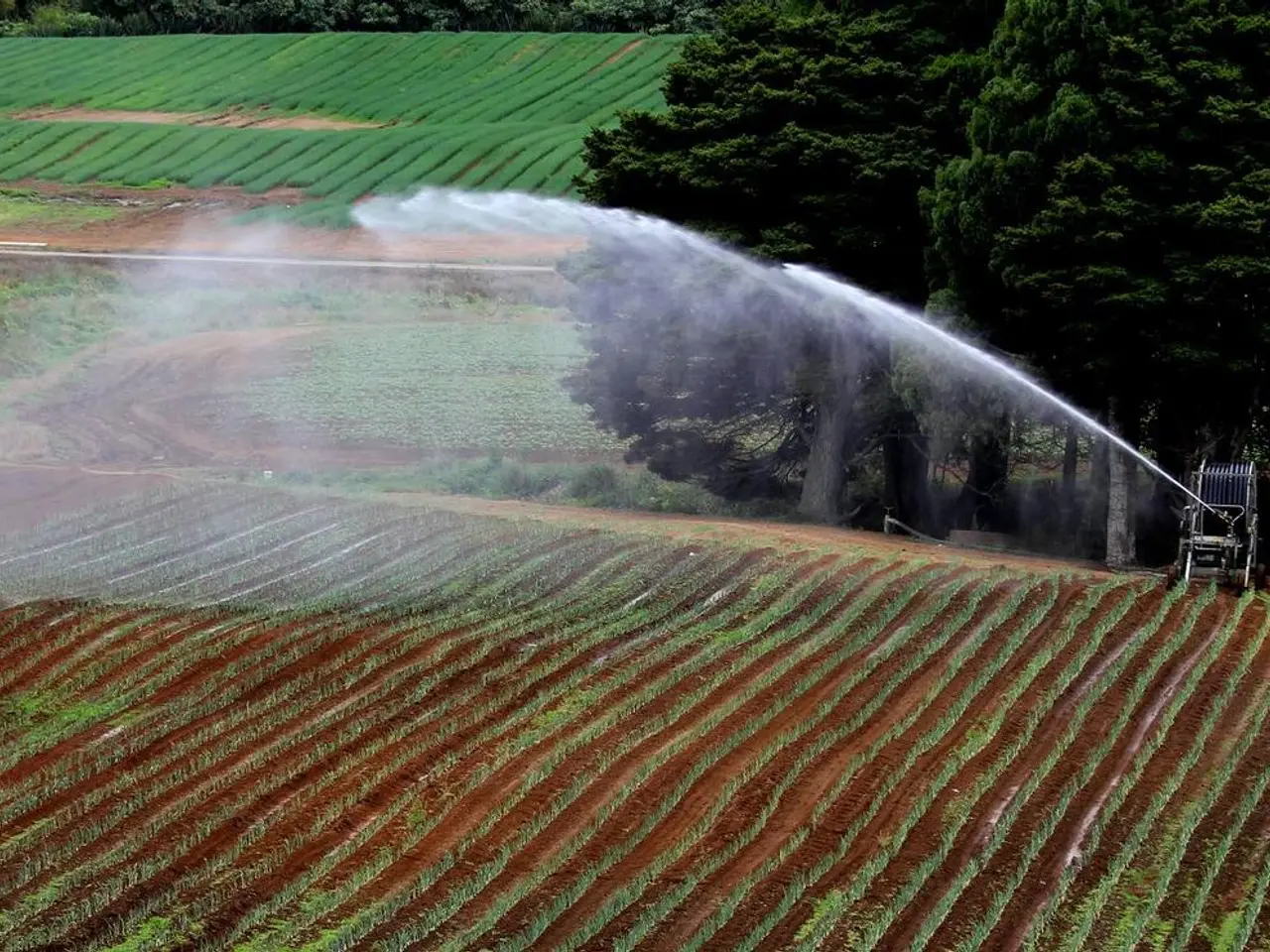Developing Agriculture Resilient to Climate Change: Strengthening Indian Farmers for a Durable Eco-friendly Legacy
Adapting to Unpredictable Weather: Climate-Resilient Agriculture for Indian Farmers
Climate change is posing unprecedented challenges for Indian farmers, as traditional farming methods struggle to cope with the shifting weather patterns and unpredictable events. However, a solution lies in embracing climate-resilient agriculture, a practice that combines science, local wisdom, and support systems to create farming practices that can withstand the shocks of a changing climate.
Cultivating Climate-Resilient Crops
Encouraging the cultivation of drought-, flood-, and heat-tolerant crops, such as millets like ragi and kutki, and short-duration varieties like Pusa Basmati and DRR Dhan-44, helps farmers manage the shifting weather patterns. These crops are water-efficient and well-suited for rainfed areas, bridging nutritional gaps and providing a sustainable source of income.
Innovations in Water Management
Techniques like micro-irrigation, rainwater harvesting, watershed development, and soil moisture sensors are critical under irregular monsoons and droughts. These innovations not only enhance water use efficiency but also help farmers make the most of the available water resources, ensuring crop growth even in challenging conditions.
Improving Soil Health and Regenerative Agriculture
Organic practices like compost, agroforestry, crop rotation, and regenerative farming improve soil fertility and carbon sequestration, increasing resilience against extreme weather and reducing input costs. In a country where soil degradation and groundwater depletion are widespread issues, these practices play a significant role in building a sustainable agriculture system.
Digital Advisory and Precision Farming
The use of satellite data, weather forecasts, mobile advisories, IoT, drones, and AI helps farmers adapt their practices dynamically to localized climate conditions, improving yields despite shocks. By providing real-time information and guidance, these digital tools enable farmers to make informed decisions, ultimately leading to increased productivity.
Community-Driven Adaptation
Organising farmers, especially women, into collectives helps revive traditional knowledge, diversify crops, and improve access to resources. This approach supports nutrition and income security in vulnerable regions, fostering a sense of community and collaboration.
Risk Management
Crop insurance schemes like the PM Fasal Bima Yojana and emerging technologies like blockchain for claims support farmers financially against climate-induced losses. These measures provide a safety net for farmers, helping them to continue their livelihoods even in the face of adverse weather conditions.
Strengthening Local Capacities
Strengthening local capacities, promoting sustainable practices, and bridging the gap between research and rural fields can protect the food system. By empowering farmers with the knowledge and resources they need to adapt to climate change, we can ensure food security for generations to come.
In conclusion, climate-resilient agriculture practices offer a promising solution for Indian farmers to adapt to unpredictable weather and a changing climate. By promoting crop diversification, efficient water use, soil health improvement, and leveraging digital tools for timely decision-making, we can reduce vulnerability to climate shocks, improve productivity, and sustain livelihoods under increased climate variability.
- Embracing environmental science, particularly climate-resilient agriculture practices, involves a combination of science, local wisdom, and support systems, which can help farmers in India adapt to unpredictable weather and survive climate change challenges.
- Innovations in water management, such as micro-irrigation and rainwater harvesting systems, along with techniques like soil moisture sensors, are essential for enhancing water use efficiency under irregular monsoons and droughts, promoting crop growth and increasing resilience in challenging weather scenarios.








